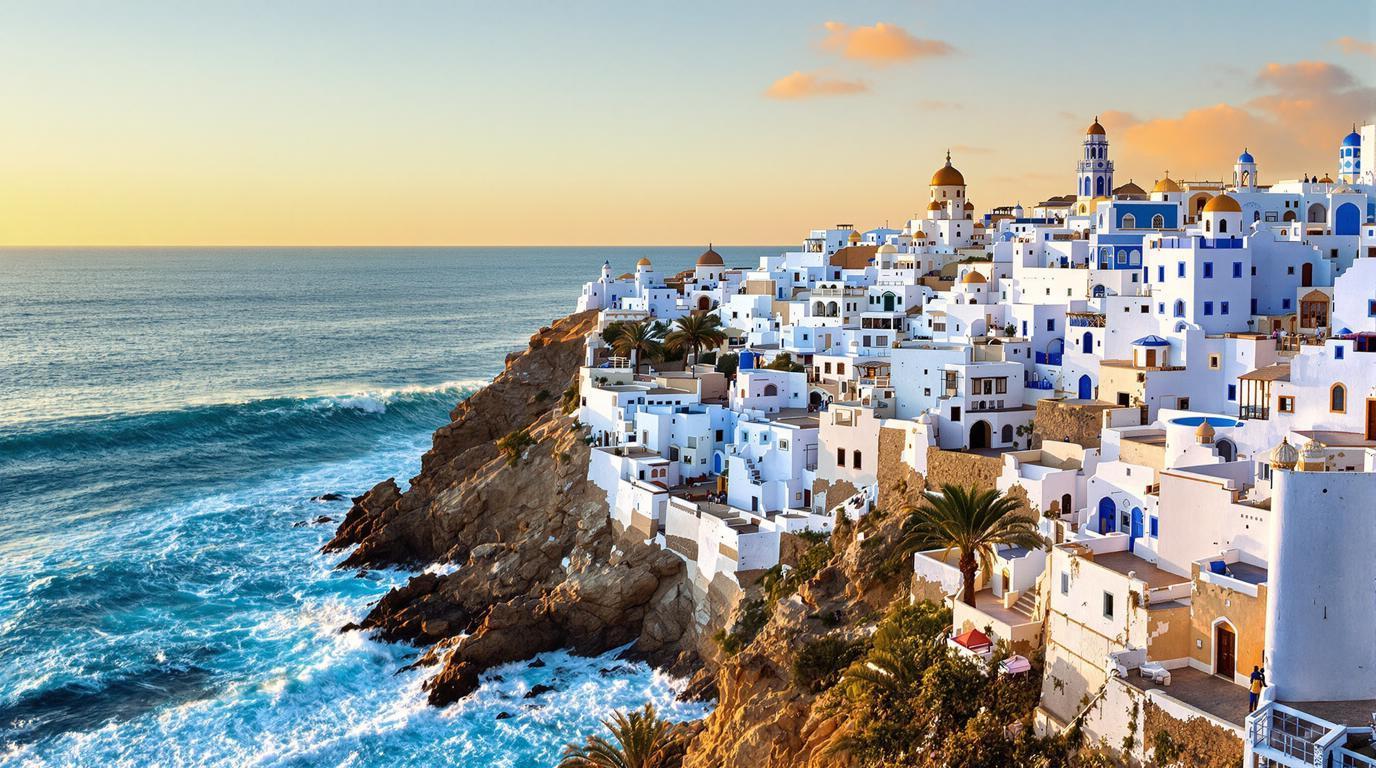Rabat: Morocco’s Oceanfront Capital Where Ancient Kasbah Meets Atlantic Shores
Morocco’s capital Rabat often lives in the shadow of more famous destinations like Marrakech or Casablanca, yet this coastal gem offers travelers a perfect blend of historical wonders and oceanic beauty. Unlike some under-the-radar beach destinations, Rabat presents a rare treasure: an imperial city with an oceanfront kasbah where history meets the rhythm of Atlantic waves.
The majestic oceanfront kasbah that dates back to the 12th century
The Kasbah of the Udayas stands as Rabat’s crowning glory, perched dramatically where the Bou Regreg River meets the Atlantic Ocean. This UNESCO World Heritage fortress, constructed in the 12th century, features iconic blue and white alleyways reminiscent of Greek islands, yet distinctly Moroccan. From its ramparts, visitors enjoy sweeping ocean panoramas that have captivated onlookers for centuries.
“Our kasbah tells Morocco’s story through its stones. Standing here where the river meets ocean, you feel the convergence of our nation’s past and future,” explains Hassan Mekouar, a local historian who leads cultural tours through the fortress.
Where storks nest atop ancient ruins in a medieval necropolis
Just outside the city center lies Chellah, a hauntingly beautiful necropolis where Roman ruins merge with medieval Islamic monuments. What makes this archaeological treasure truly special is the colony of storks that build massive nests atop the crumbling structures. Their symbolic presence – storks represent good luck in Moroccan culture – creates a magical atmosphere as you wander among fig trees and ancient columns.
The site offers a serenity that rivals even the most peaceful hidden American locations, especially in early morning when mist rolls in from the nearby river.
The unfinished minaret that tells stories of imperial ambition
Hassan Tower stands as a monument to grand ambitions unfulfilled. Intended to be the world’s largest minaret when construction began in 1195, work abruptly halted after Sultan Yacoub al-Mansour’s death. Today, the tower reaches only half its planned height, surrounded by 200 columns meant to support a massive mosque that never materialized.
“It’s our reminder that even the mightiest rulers are mortal. The tower teaches humility,” shares Fatima Benali, a university professor specializing in Moroccan architecture.
A royal capital with surprising tranquility
Unlike Marrakech’s sensory overload, Rabat moves at a gentler pace. As Morocco’s administrative center, the city balances governmental gravitas with unexpected serenity. Wide boulevards lined with palm trees lead to the impressive Royal Palace, while the adjacent Andalusian Gardens offer peaceful refuge with fountains and citrus trees.
This balance makes Rabat feel like a refreshing alternative to more tourist-heavy destinations, even during peak seasons.
Where blue waters meet ancient walls
Rabat’s position along the Atlantic creates striking visual contrasts between cerulean waters and honey-colored fortifications. The Bou Regreg River estuary forms a natural harbor where traditional fishing boats bob alongside luxury yachts. Cross the river to Salé, Rabat’s sister city, for authentic fish markets and panoramic views back toward the capital’s impressive skyline.
A culinary scene blending Andalusian and Berber influences
Rabat’s cuisine reflects Morocco’s diverse cultural influences. In the medina, small restaurants serve tajines slow-cooked with preserved lemons and olives, while oceanfront establishments specialize in fresh seafood with Andalusian spicing. Don’t miss the opportunity to sample pastilla, a sweet-savory pie combining shredded pigeon meat, almonds, and cinnamon dusted with powdered sugar.
This culinary tradition rivals even the unique food and drink heritage of France’s monastic communities.
A modern art scene housed in historic buildings
The Mohammed VI Museum of Modern and Contemporary Art represents Morocco’s commitment to fostering artistic expression. Housed in a building that blends traditional Moroccan elements with contemporary design, the museum showcases works from across Africa and the Arab world. Nearby, converted riads host galleries featuring emerging Moroccan artists who blend traditional craftsmanship with modern aesthetics.
Where sunset transforms ancient stones to gold
As daylight fades, Rabat undergoes a magical transformation. The setting sun bathes the kasbah’s walls in golden light, creating a spectacle reminiscent of the golden hour in Europe’s most scenic hidden villages. Locals and visitors gather along the corniche to witness this daily performance as the Atlantic horizon swallows the sun in a final blaze of color.
In Rabat, Morocco has crafted a capital that honors its past while embracing its future. The oceanfront kasbah stands as both sentinel and symbol of a nation where history isn’t confined to museums but lives vibrantly along sun-drenched shores, inviting travelers to discover royal heritage kissed by Atlantic breezes.
